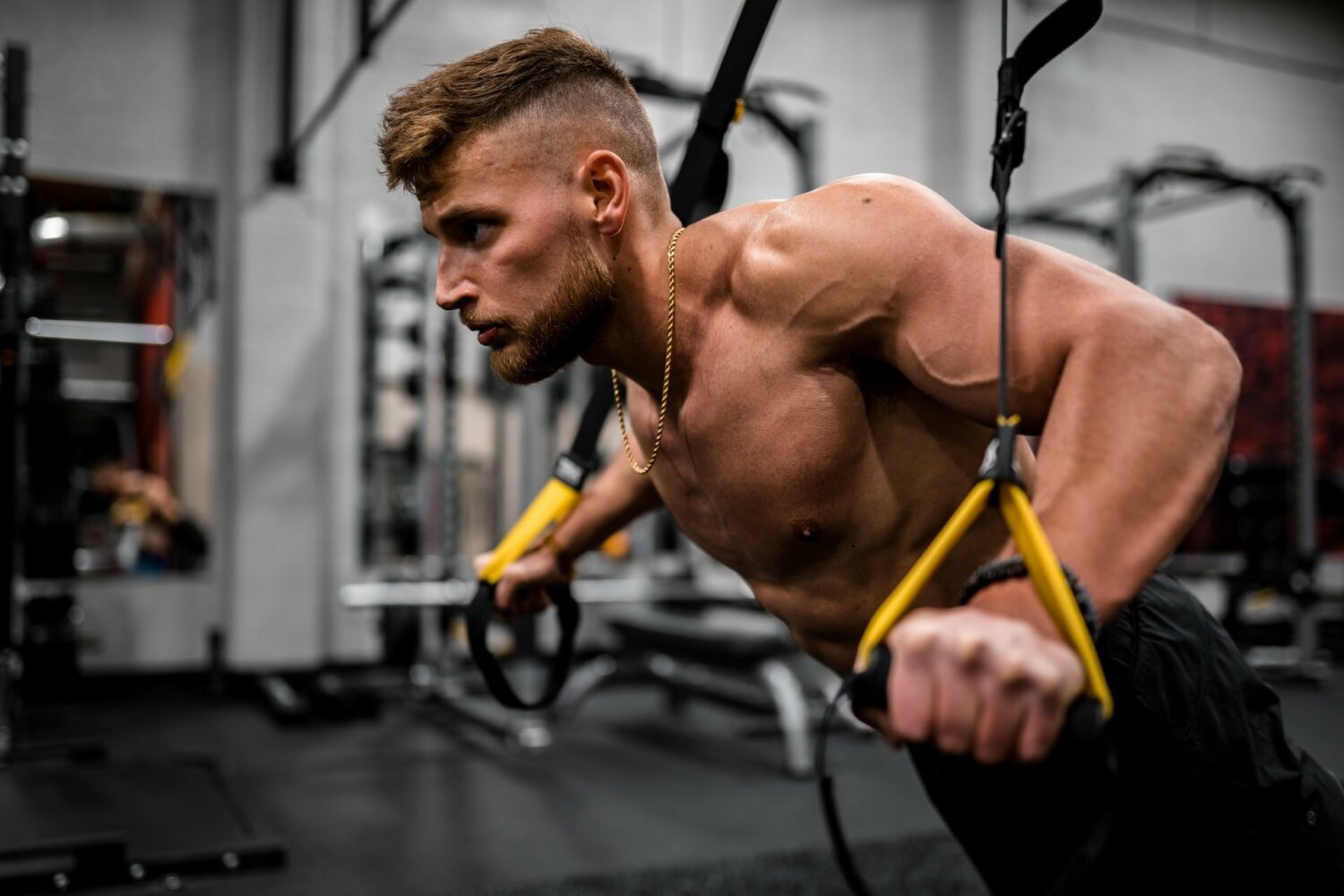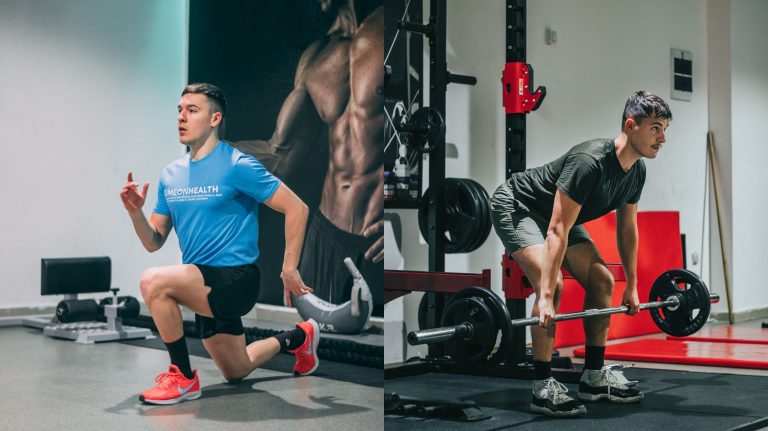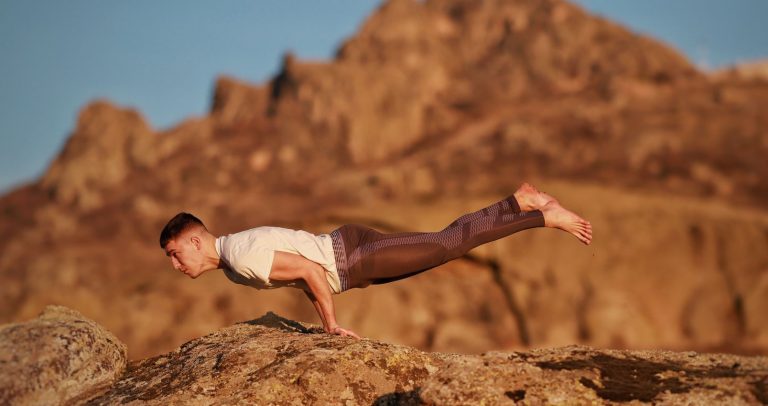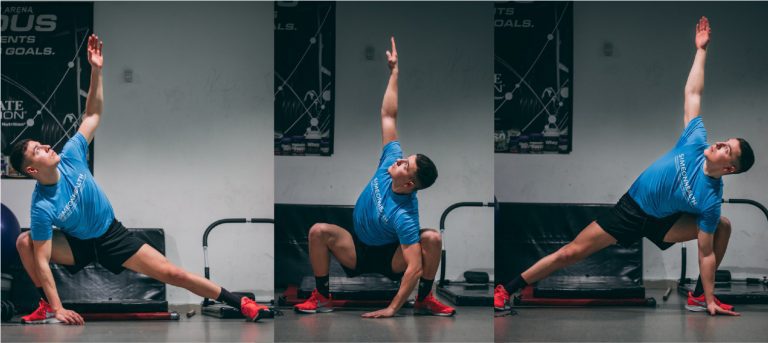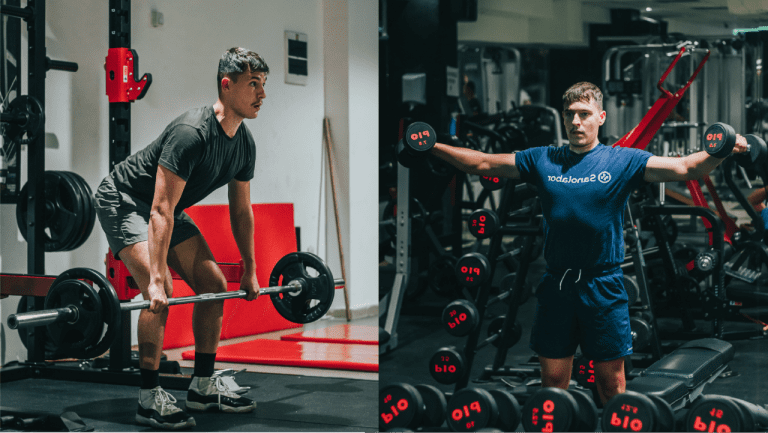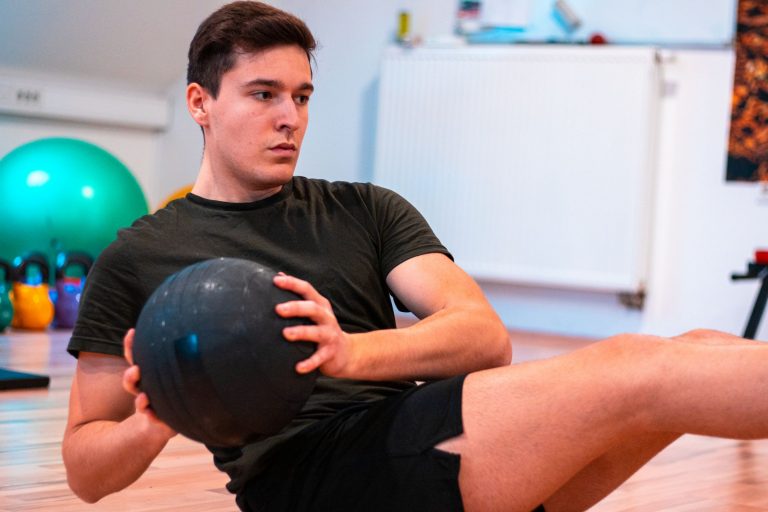TRX Training: Top 18 Exercises, Basics, Science, Benefits and Workout
TRX Suspension Training | What is it?
TRX Training is training solely focused on bodyweight exercises, made to develop strength, balance, stability, and intramuscular coordination.
The TRX Suspension Trainer set is required, in order to perform such exercises. The best thing about it is its adaptable, lightweight, and easy to transport or bring with you.
TRX Characteristics
Efficiency & Functionality
TRX suspension trainer is so good because it is a combination of bodyweight and functional training which can ensure you get the needed workout in time, even if the weather is not nice, you are not feeling the gym, or want a quick at-home workout. From an economical perspective, this set is a beast. For only 200$ you are getting a full-body workout.
Complexity & Adaptability
By complexity, I mean the ability to be manipulated. This Set is so functional that by manipulating its attachment, height, length, handles, and bands you can perform up to a hundred different exercises for your whole body, including arms, legs, and the main one – core stabilization.
Transportability & Lightweight-ness
The whole TRX Suspension system comes with one small mesh travel pouch, which can fit in a fifth of a backpack making it very portable. The weight of this whole system is less than one kilogram, specifically 1.69 lbs and it can hold up to 350 lbs (158 kg) of weight.
TRX: Cost-effective Gym-Alternative for Functional Strength & Stabilization
As a kinesiologist, I have incorporated TRX in my workout routines as well as when I’m training my clients. Usually, we do more emphasis on core stabilization and proper posture and we’d rather give our clients fewer repetitions, but more optimal posture.
Here are the top 3 questions I get asked from my audience on TRX:
How is TRX better than weights, bands, or machines?
First of all, everyone has specific goals, different desires, and preferences. This means an individualized workout is the best one, tailor-made for the specific individual.
Where TRX Superpower lies is in its efficiency, transportability, and functionality. Such a small and inexpensive system that gives you a plethora of functional bodyweight exercise possibilities can make a significant improvement in one’s life.
The superpower of TRX is its ability to reinforce core activation and stabilization with every exercise, making it a great functional exercise tool for improving your coactivation, posture, and stability.
Is TRX a cost-effective tool for workouts at home?
Yes, TRX is pretty efficient in its potential to give you different postures and exercises, with a little bit of manipulation from your side. Reading this article and the TRX manual will enable you to understand what types of exercises are out there, and how to perform them correctly.
Can I build muscle and lose fat with TRX training?
While fat loss is not the biggest strength when it comes to TRX, yes you can. But if your main goal is to lose fat, you might be better off doing cardio or weightlifting training. TRX can highly improve your body awareness, stability, and inner strength such as Pilates and advanced forms of yoga can. It can help build muscle strength, being more effective for balance rather than muscle mass. While you can significantly improve both as a beginner, an experienced lifter will have greater hypertrophy from bodybuilding methods.
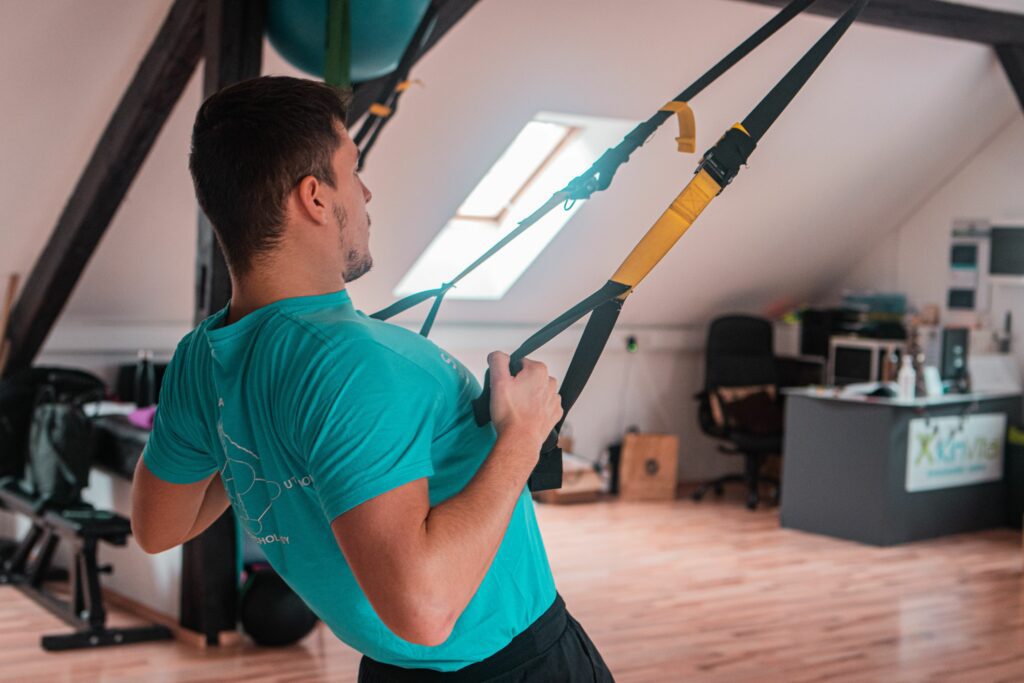
Top 18 TRX Exercises
The Exercises present in this section are categorized in:
- Upper Body – Push Motions (mainly working the chest, triceps, and front shoulders) or Pull Motion (mainly working the scapula retractors, back and rear shoulders)
- Core & Abdominals – Flexion, extension, or isometric contractions (Involving core stabilizers)
- Lower Body – Ankle, Knee or Hip Flexion, Extension, Abductions, and Adductions (activating muscles such as calves, quadriceps, hamstrings, adductors, abductors, and gluteus)
These exercises range from Beginner to Intermediate and Advanced Level, so if you are looking for a specific TRX workout routine based on experience or fitness level, I will give a hyperlink here once I write that article.
Upper Body Exercises
Low-Row
Unilateral Row
TRX Chest Press
Triceps Press
Biceps Curl
TRX Chest Fly
The low row is the best exercise for postural improvement, especially when dealing with a head tilted forward or slouched shoulder, kyphotic stance. This activates the scapular retractors and makes you extend the thoracic vertebrae while activating your upper back muscles.
- Perform: Facing the TRX handles step slightly forward and grip the handles overhand, palms facing each other. Lean back so your body is around 60 degrees to the floor (back side). Retract your scapula and from a straight position pull yourself up to stance pushing your elbows back while trying to squeeze your shoulder blades together. Slowly go back and repeat.
Just like rowing in the gym – done with one dumbbell the unilateral pull/row can be done with a TRX. This activates scapular retractors and other back muscles in a pulling motion.
- Perform: Facing forward grip the handles so palms are facing each other, step slightly forward and lean back while keeping your body straight. Release one grip and rotate your torso, trying to extend the released arm back and down. Slowly pull yourself with the hand that is gripping the handle while keeping a neutral spine. Repeat on the other side.
The chest press is best when done in a full range of motion, of course before any pain in the shoulder shows up and you have optimal stabilization. This exercise requires core stabilization, shoulder mobility, and push motion from the chest, deltoids, and triceps.
- Perform: Facing forward, feet shoulder-width apart. Grip the handles overhand and extend your arms. Your body should be at 60 degrees facing the floor, with straight arms, and a neutral spine. Slowly eccentrically allow your body to go down, then push back through your chest and triceps.
This exercise incorporates the core as much as it activates the triceps. It is similar to school crushers done with weights, mainly activating the lateral and long triceps. It is a pretty exhausting exercise due to higher stabilization requirements.
- Perform: Facing the TRX Handles, set higher, you grip the handles while flexing your elbows, gripping them behind your head. Your body goes slightly forward (70 degrees) frontally. By extending your triceps you push yourself up until your whole body (including arms) is straight and you activate your core, then go back.
One of the trickier TRX exercises to learn. Remember the most important thing is to engage your biceps while curling it instead of pulling with your back muscles. One bonus tip to do it correctly is to think of lifting your elbows up when curling the biceps.
- Perform: Stand below the TRX handles, shoulder-width apart. Grab them with an underhand grip and slowly (controlled) fall back until your arms are extended, while holding the handles. Your body should be at around 60 degrees to the floor (now facing to your back side). To make it easier place your feet closer to your core. To perform the exercise, curl your biceps and pull yourself up through it. Then slowly eccentrically let go until you extend your arms.
The difference between the gym machine and the dumbbell fly is core activation. This exercise has a tremendous impact on our core when done correctly. The main activation is in the chest.
- Perform the same position such as chest push/press, we grip the handles overhand facing forward, and slowly let our straight body bend to 60 degrees facing the floor. The difference is that we extend the elbows now, abducting our arms to the side (with a slight elbow bend). The motion is pushing back to stance while adducting your arms/shoulders. Then go back and repeat.
Core Stabilization Exercises
TRX Plank
Torso Rotation
TRX Mountain Climbers
Reversed MC
Pike
Side Knee-Tuck
The plank activates all spine stabilizers, and abdominal and lower back muscles. It is a great exercise that can be made harder through TRX training if you put your feet on the foot cradle.
- Perform: The TRX Plank can be done by putting the front of your foot in the foot cradle (below the handles) and setting yourself in a plank on your hands or forearms. Since the TRX shakes, this requires extra abdominal activation & core stabilization. It is an isometric exercise so stay in the position for 30-60 seconds and rest.
The torso rotation plank is great for side or diagonal movement functionality. You can activate the oblique muscles (both external and internal) which can help with rotatory movements and core strength.
- Perform: Set yourself the same as in the regular plank position. The movement is different because you are rotating to the left or right. Standing on your forearms, with a straight spine and body slowly rotate to the left, lifting your left arm up, rotating your feet, and staying on your right forearm. Slowly reverse back and rotate again on the same side. Once you are done with 5-15 reps of unilateral rotations you go to the other side (you are not rotating left, then right in the same cycle).
Mountain climbers are made harder with TRX and can activate a higher portion of the abdominal muscles. The basic movement is abdominal flexion, activating mainly the Rectus abdominis, which we call the six-pack abs.
- Perform: In the same position as the plank. So front feet are on the foot cradle, and you stay on your hands in a plank position. Then slowly push one knee to your core, and go back. Repeat the same with the other leg, pushing the knee to the core and back.
Reversed mountain climbers may be painful or inconvenient if you suffer from a shoulder injury or have poor mobility. But otherwise, it is a great way to additionally activate your shoulders, triceps, and glutes while working the abs.
- Perform: While sitting down put your heels on the foot cradle, and extend your hips as in a bridge while supporting your weight on your straight arms, hands on the floor. Now flex one knee to your core, straighten back and repeat with the other leg.
Pike is one of the more challenging exercises, a great core activator but also a triceps and shoulder stabilizer. It is a progression for those wanting to go to press handstand, which works your whole upper body.
- Perform: Set yourself in a suspended plank position. Toes and head facing the floor, straight (neutral) spine. Slowly push your feet forward while bringing your hips overhead. Push your shoulders forward, and press through your palm until you come to a V-shape position. Then get back slowly in plank (without overarching our back) and repeat again.
One of the best exercises to lose love handles and build oblique muscles is a side knee tuck on TRX. Like the other exercises, it stimulates core stabilization and works the abdominal muscles. Since it works the obliques, it can add strength to rotatory movements.
- Perform: Position yourself as in a plank, front foot on the foot cradle, palms on the floor, and neutral spine. Push both of your knees to the left triceps/shoulder as far as you can, then repeat on the other side. Try consciously activating your abdominal side flexors.
Lower Body Exercises
One-Leg Squat
Back Lunge
Glute Bridge
Squat Jump
Plyo Lunges
Crossback
This is an easier version of the bodyweight single-leg squat but a harder one than TRX regular squat. It mainly works the hamstring, quads, and glutes muscles. Great unilateral exercise for strengthening your legs.
- Perform: Step to the TRX facing forward, feet are shoulder-width apart, and grip the handles. Lift your left leg and set your foot in front of you. Slowly squat down on your right leg (which supports your weight) and minimally help yourself by supporting your weight by pulling/holding the TRX handles. After a couple of reps, repeat on the other side.
Back lunge is a more challenging version of the basic lunge or bench-supported lunge, mainly because you need to activate your core and hip stabilizers. The front leg hip adductors and abductors are usually on fire during this, but this can enhance your dynamic balance.
- Perform: To perform a back lunge on TRX stand in front of it, facing away. Lift your left leg and put your feet in the TRX foot cradle. At starting point your right (supporting) leg is in front, back leg is extended in the back. Lunge down by flexing both knees and standing up with your hands on your hips. After desired repetitions are done, repeat on the other side.
The glute bridge is a great option for anyone who doesn’t feel the single-leg or regular glute bridges. It significantly increases glute activation (medius, minimus, maximus) and hip stabilizing muscles (adductors, abductors) while working the lower back, core, and hip extensors. To step it down a notch, you can use a Bosu-ball to perform it, as a progression until you make it to the TRX version.
- Perform: Lay down on your back facing the TRX and place the arch of your feet on the cradles. Place your hands next to you for support. Slowly push your hips up, drive through your feet and try to stabilize in the hip to reduce movement and keep a neutral spine. Then slowly let your hips go down until they touch the floor for the next repetition.
The squat jump is more of a cardio-focused exercise including jumps in its movement. We work the quads, glutes, hamstring, and calves here. It is a great booty-shaping and weight-loss option.
- Perform. To perform the TRX squat-jump you face the TRX with your feet hip-width apart or slightly wider. Hold the handles with your palms facing each other. Slowly squat down and push back up jumping. After each, jump to a quick squat and push back, at all times you support yourself by holding the handles and jumping slightly back and up. While squatting, your knees are facing the direction of your toes which are slightly outward.
Plyo Lunge is a great cardio option working the legs too. It is a jumping motion where we switch legs from lunge to lunge.
- Perform: to perform the plyo lunges you want to lunge first, facing the TRX and gripping its handles with palms facing each other. The TRX is not parallel but the handles are closer to you, while the upper attachment is away. From the right leg forward lunge you jump and switch legs (coming with left foot forward) while slightly pulling/supporting your weight in the TRX handles. After a couple of reps, you should feel the burn in your glutes and quads.
Crossbacks are a great exercise for those looking for extra unilateral or single-leg stability. Usually, I perform them with no TRX in my own Yoga routine, it is the best way to fire up the legs, especially hip abductors and stabilizers, including the gluteus muscle.
- Perform: To perform the crossback you want to face the TRX, griping its handles with palms facing each other. Stand on your right leg and slowly lunge while pushing your left foot back and across the right side with minimal surface touch. After a couple of reps, you should feel the burn. Then repeat on the other side.
TRX Workout Routine At Home
If you are interested in working out at home try this routine:
Pick 4 exercises from each section: so 4 from push/pull, 4 from core stabilization, and 4 from the lower body TRX exercises section. Each section has 2 beginner, 2 intermediate levels, and 2 advanced exercises, so choose accordingly. Once you choose your favorite 12 exercises, split them into three-day sections.
TRX Routine Example:
- Monday (upper body): Low-Row, Unilateral Single-Arm Row, TRX Chest Press, Triceps Press
- Tuesday (core stabilization): TRX Plank, TRX Mountain Climbers, Reversed Mountain Climbers, Side Knee Tuck
- Wednesday (lower body): Back Lunge, Glute Bridge, TRX Squat jump, Crossbacks
- Thursday (upper body): Low-Row, Unilateral Single-Arm Row, TRX Chest Press, Triceps Press
- Friday (core stabilization): TRX Plank, TRX Mountain Climbers, Reversed Mountain Climbers, Side Knee Tuck
- Saturday (lower body): Back Lunge, Glute Bridge, TRX Squat jump, Crossbacks
- Sunday (rest): stretching, yoga, mindfulness practice
Beginners Guide to Repetitions, Series, and Rest:
Depending on your fitness level, you can manipulate your rest and work ratio.
A general rule of thumb is to work for 30 seconds, rest for 30 seconds until you cover one-third of your protocol, then rest for 2 minutes.
- In repetitions this would look like this: you do ten reps of one exercise, considering you need 2-3 seconds to do so, after 20-30 seconds of exercise you rest for 30 seconds and go on to the next set.
Usually, with TRX we do 8-12 repetitions, 2-4 sets of each exercise, 4-6 exercises in total
This means you do every exercise with 30-second rest in between sets, and when going on the next one, you rest and prepare for 2 minutes.
Make sure you adjust your intensity accordingly to your goals, the more you work and less you rest, the higher intensity and efficiency of the exercise you get, but less time you are able to perform.
Conclusion
TRX Training is a Suspension Training System that emphasizes strength, balance, and stability. It is one of the best exercise protocols that allows versatile bodyweight training and is transportable and adaptable at the same time. TRX is a cost-effective way to replace a Gym and a very practical tool for travelers who want to stay fit. One of the most important TRX training benefits is functional strength, intramuscular coordination, and balance.
Frequently Asked Questions
What TRX exercises are good for the core?
Almost all TRX exercises are great for your core if done correctly because they reinforce core activation and stabilization, it’s the TRX superpower. If you are looking for core dominant exercises tho, you should look at the plank, torso rotation, knee tuck, mountain climbers (regular and reversed), and pike.
What are the pros and cons of TRX exercises?
TRX has many positive effects on strength, balance, and co-activation. You can gain inner stability and strength when performing the exercises correctly. From my own experience, as a kinesiologist, the cons would be wrist or shoulder pain/damage for someone who is performing incorrect TRX exercises, especially in older age.
What is the most challenging TRX exercise?
TRX Y Fly is pretty tough. It is done by pulling yourself with extended arms. You grip the handles as in a row, but you pull yourself up without elbow flexion, plus you pull by upward extension. You need to activate your back, hips, and core quite a lot.
Is TRX good for muscle growth?
If it can be used by Navy Seals, Yes it is. It is a great tool for muscle growth but definitely not as effective as the bodybuilding method or heavy compound weightlifting. TRX can build you muscle for sure, plus aid in the postural improvement and overall core stabilization which is pretty functional and healthy for you. Expecting that you will look like a bodybuilder after a TRX session, it’s just too much. However, combining TRX with weightlifting is great to additionally fire up your core.
What is TRX Training?
TRX Suspension Training is training solely focused on bodyweight exercises, made to develop strength, balance, stability, and intramuscular coordination.

